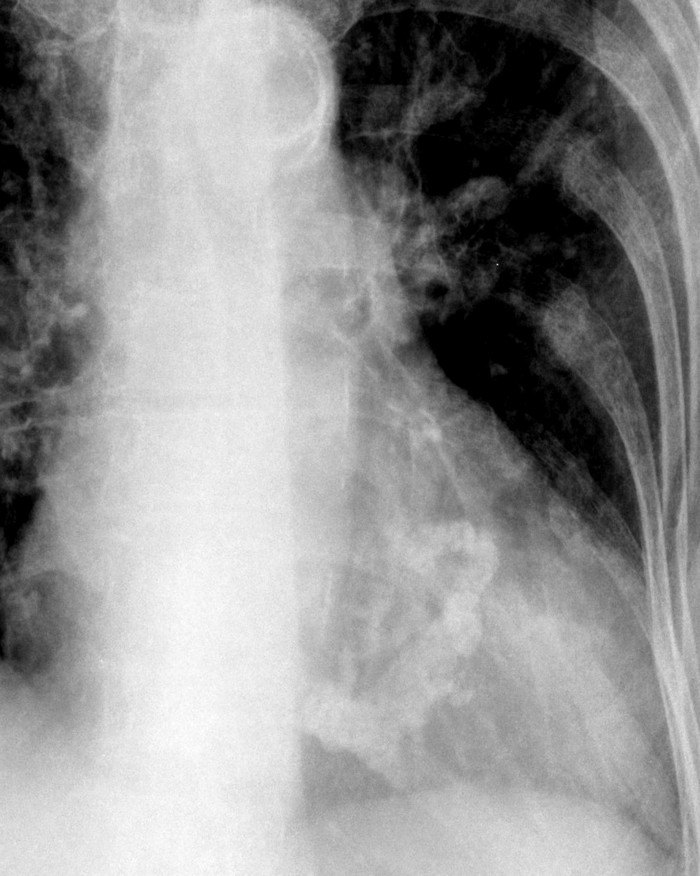Mitral regurgitation chest x-ray
| Resident Survival Guide |
|
Mitral Regurgitation Microchapters |
|
Diagnosis |
|---|
|
Treatment |
|
Case Studies |
|
Mitral regurgitation chest x-ray On the Web |
|
American Roentgen Ray Society Images of Mitral regurgitation chest x-ray |
|
Risk calculators and risk factors for Mitral regurgitation chest x-ray |
Editor-In-Chief: C. Michael Gibson, M.S., M.D. [1]; Associate Editor(s)-in-Chief: Cafer Zorkun, M.D., Ph.D. [2]; Varun Kumar, M.B.B.S.; Lakshmi Gopalakrishnan, M.B.B.S.
Overview
The chest X-ray in individuals with chronic mitral regurgitation (MR) is characterized by the presence of an enlargement of the left atrium and the left ventricle. In acute MR, pulmonary edema is present and the heart is not enlarged.
Chest X Ray
- In acute MR, chest X-ray reveals pulmonary edema caused by pulmonary congestion secondary to the abrupt rise in pressure in the left atrium. There is no enlargement of the cardiac silhouette in acute MR.[1]
- In chronic MR, the pulmonary vascular markings are typically normal since the pulmonary venous pressures are usually not significantly elevated. The left side of the heart might be enlarged. The left main bronchus can be pushed up by an enlarged left atrium.
- Calcification of the mitral annulus is not infrequent, and is seen in up to 35% of elderly patients on echocardiography which is more sensitive than chest X-ray. It typically begins around the margins of the posterior leaflet forming a “C”, eventually the “C” closes forming an “O” with anterior leaflet involvement. [3])

Calcification of the mitral annulus
References
- ↑ Mitral regurgitation https://radiopaedia.org/articles/mitral-valve-regurgitation (2016) Accessed on December 13, 2016